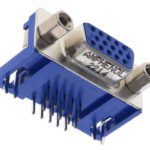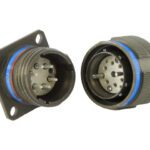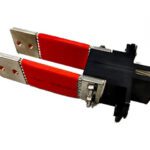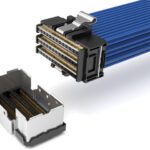Meet the Connector: DIN Standard Connectors
The German standards organization DIN is behind the quality, safety, and interoperability of electronic components used around the world.
The term “DIN connector” refers to a wide range of connectors that adhere to standards set by the Deutsches Institut für Normung (DIN) or German Institute for Standardization. DIN standards for electronic connectors cover design, dimensions, materials, and performance requirements.
DIN connectors vary in size, pin configuration, and type, and serve a wide variety of markets and purposes, including audio, video, data, power, and signal transmission. Common DIN connectors include DIN 41612, Circular DIN, Mini DIN, and various other configurations with different pin counts (e.g., 7-pin, 8-pin, 13-pin, 14-pin, 15-pin, 19-pin, etc.).
DIN was founded in 1917 during World War I to standardize manufacturing processes and materials to improve efficiency and interoperability of products. DIN represents German interests in international organizations such as CEN, the European standards body, and ISO, the International Standards Organization. Many German connector companies are involved with DIN’s standardization process. However, DIN standards have a significant impact beyond Germany. Many DIN standards have been adopted as international standards and compliance with DIN standards enhances market access and competitiveness for companies operating globally.
Common DIN connector products
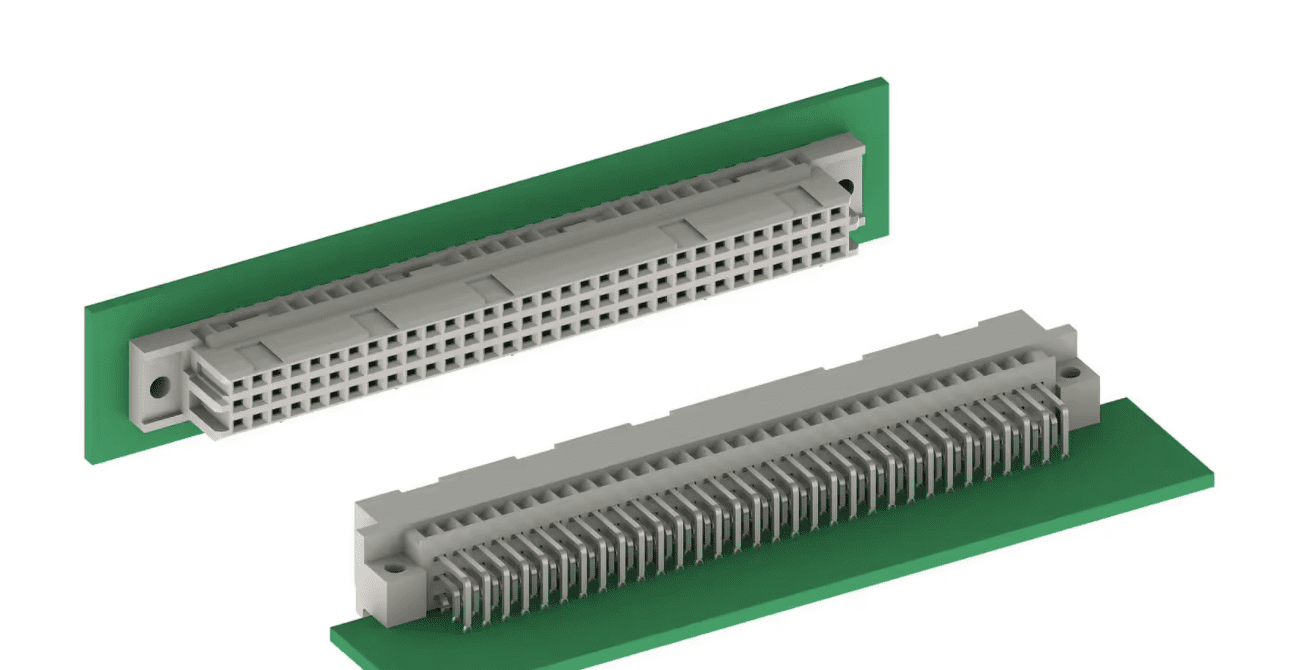
The DIN 41612 board to board connector from ept connectors is available in a variety of different styles and termination technologies (press-fit, dip soldering, manual soldering, wrapping, crimping, THR) to cover a wide range of applications.
DIN 41612 is one of the most recognized and widely used DIN connectors, particularly in computer and telecommunications equipment. It features a rectangular interface with multiple pins arranged in rows and columns, making it suitable for high-density connections in PCBs. It has been largely supplanted in favor of international standards IEC 60603-2 and EN 60603-2.
Circular DIN (DIN 41524): Although not as popular today, the circular DIN connector was the primary connection between a computer keyboard and the mouse and other peripheral equipment used with a desk top computer prior to the advent of wireless. Today, this 13.1mm outside diameter connector is primarily used for audio connections and low-voltage power supplies.
A spin off of the circular DIN is the mini-DIN. As indicated by the name, the mini-DIN connector has a 9mm outside diameter and is often referred to as the PS/2 connector. Like the circular DIN, the mini-DIN connector is used for S-video connections, PS/2 mouse & keyboards, and other applications and is often considered the predecessor to the USB connector.
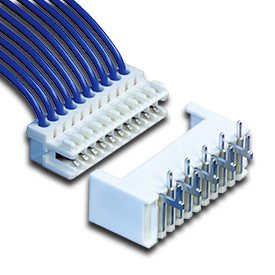
Stocko Contact’s Eco-Tronic connector system conforms with DIN EN 61984 (IEC 61984). Featuring IDC housings, direct edge versions, and polarizing and locking features, these PCB connectors with IDC termination are also in accordance with the RAST 2.5 standard specification for home appliances. Available in vertical and horizontal versions with 90° and 180° cable angles
DIN 43650 – DIN 43650 connectors are used to connect the solenoid operators of pneumatic and hydraulic solenoid valves to a range of electronic controls. Other applications include pressure transducers, proximity switches, level sensors, limit switches and low energy motors. These connectors feature a field-attachable, external-nut design that is mechanically superior to traditional internal-nut DIN valve connectors, achieving greater cable retention and improved sealing to IP67. Standard internal thread DIN valve connectors are IP65 rated and available with different thread styles, gaskets, and circuitry options.
Design Notes
Standardization
International standards such as DIN provide a common language for the technical world and support efficiency and quality assurance in industry, technology, science, and the public sector.
DIN standards for electronic connectors cover design, dimensions, materials, quality, and performance requirements. New DIN standards are continuously introduced, and existing standards may be revised or expanded over time.
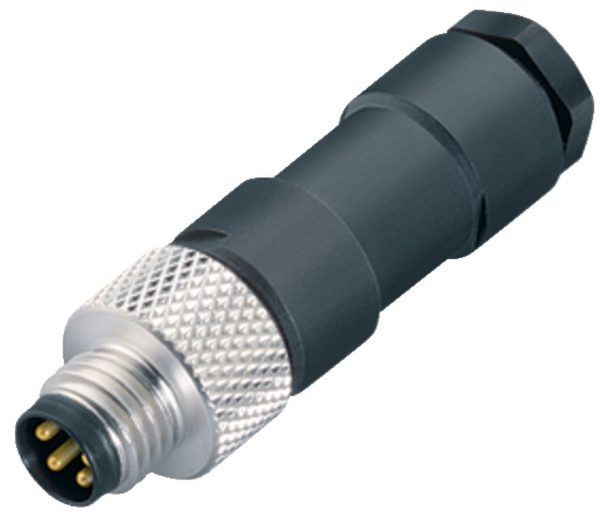
The binder easy-to-mount M8 cable connector conforms to DIN EN 61076-2-104 in protection class IP65/67, unshielded and shielded versions with 360°
Customization
DIN standards provide a framework that allows for customization and adaptation to specific industry needs or technological advancements. This flexibility enables DIN to address emerging trends and technologies.
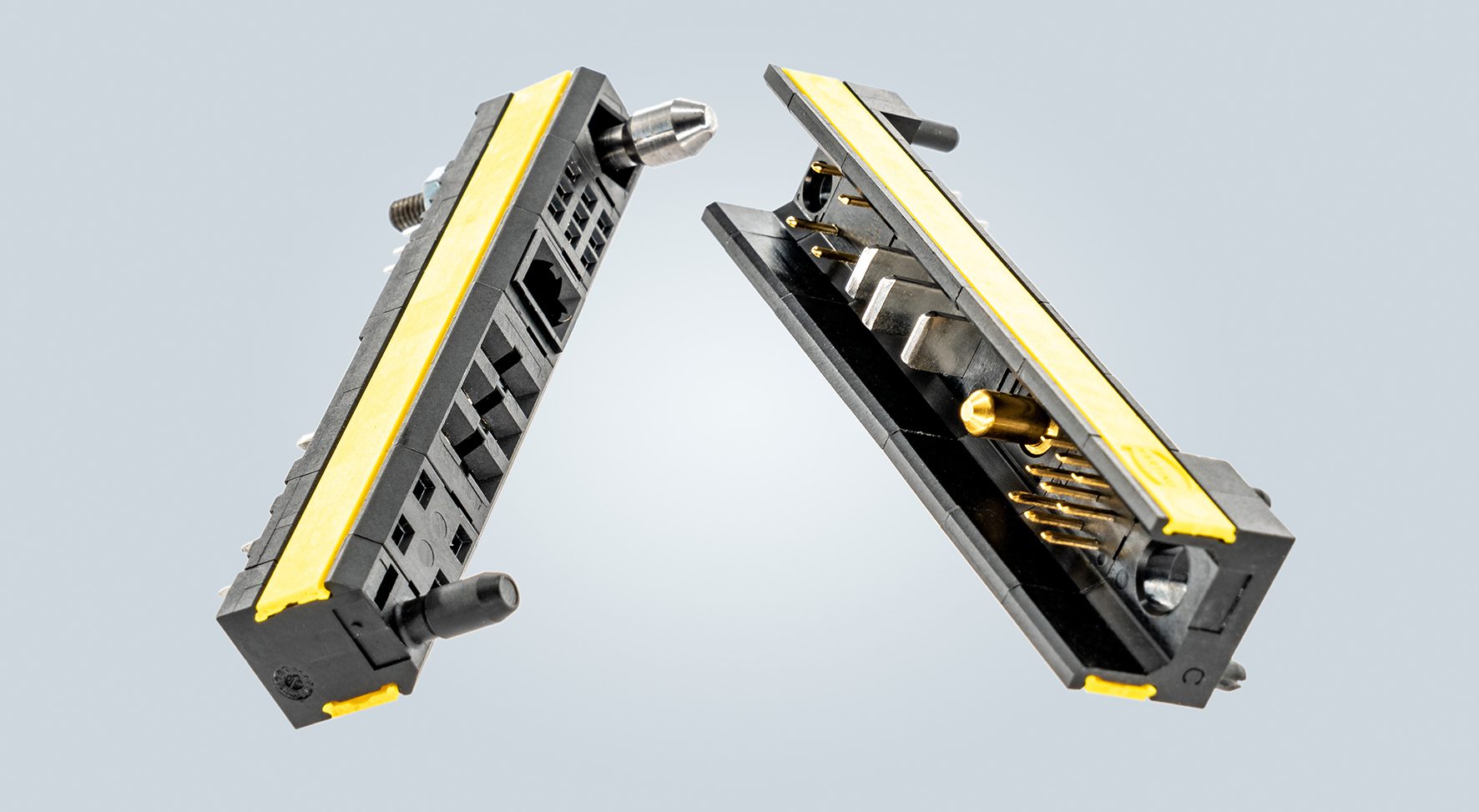
HARTING’s har-modular PCB connector is a modular concept based on reliable DIN 41612 strips, but modularly configurable via an online configurator with a trillion possible combinations. Users can choose from any number of contacts for power, signals, and data.
DIN standards define the dimensions, materials, mounting hole spacing, and other characteristics of DIN rails, ensuring compatibility and interchangeability of components from different manufacturers. DIN rails are widely used in industrial, commercial, and residential electrical installations worldwide due to their standardized design and ease of installation.
Markets
DIN standards cover a wide range of fields, including engineering, technology, manufacturing, healthcare, and many others. By establishing common benchmarks and specifications, DIN standards facilitate trade, innovation, and international cooperation.
DIN standards cover electronic components, but many other products are also standardized under the organization. For example, DIN EN ISO 216 defines the A-series of paper sizes, such as A4 and A5 pages used in planners and notebooks. This internationally recognized standard was first published as a German Standard, DIN 476 in 1922.
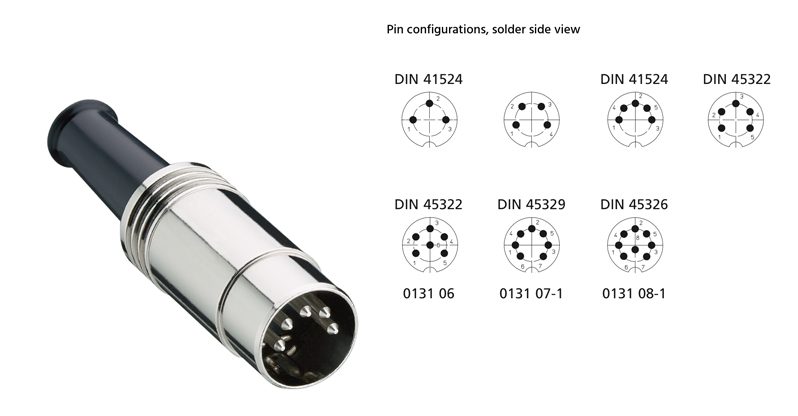
Lumberg’s DIN circular connectors feature a metal housing, shielding, bend protection, and solder terminals. Each pin count and configuration is assigned its own DIN number.
Ownership
DIN was established as a private organization but was later recognized as the national standards body for Germany.
Suppliers
- Amphenol Communications Solutions
- Belden
- ept connectors
- HARTING
- Heilind
- Lumberg
- Molex
- Mouser Electronics
- Stocko Contact
- TE Connectivity (ERNI)
- TTI
- WAGO
- Weidmuller
- Wurth Elektronic
Related products
DIN rails
Like this article? Check out our other Meet the Connector, Circular Connectors, and our Transportation Market Page, and our 2022 and 2023 Article Archive.
Subscribe to our weekly e-newsletters, follow us on LinkedIn, Twitter, and Facebook, and check out our eBook archives for more applicable, expert-informed connectivity content.
- Where in the World is Amphenol LTW’s Luc Kan? - April 23, 2024
- TE Connectivity’s Sustainability Efforts Pay Off - April 23, 2024
- What is a VGA Connector? - April 23, 2024
